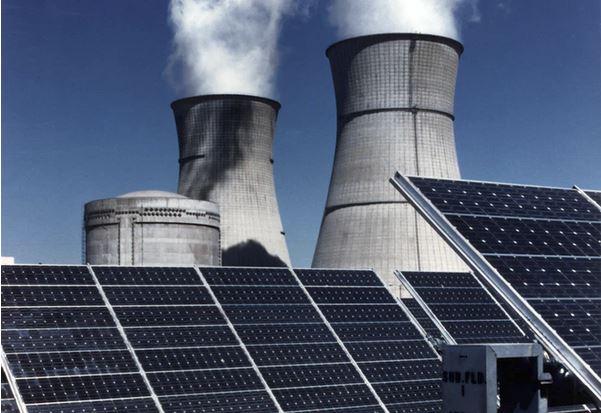Cashing In On The Future Of Energy Now

Image Source: Unsplash
Investors who successfully forecasted the last major breakthroughs in technology and biotech have captured remarkable returns. Those who get in early on the stocks reshaping the energy landscape stand to turn equally massive profits that could even put fossil fuel fortunes to shame.
Thankfully, investors looking to capitalize on the alternative energy revolution don’t have to predict the future entirely or get extremely lucky. A few crucial areas of this fast-growing industry are sure to dominate the next decade-plus of expansion and investment. They are already rather well established, though they’re still in their infancy in terms of capabilities, efficiency, and adoption.
For instance, one solar energy firm grew its revenue from $300 million in 2018 to $1.4 billion last year, and it’s projected to pull in $3 billion in 2023 for an average annual growth rate of 60%.
Plus, the share of U.S. electricity generated by renewables doubled over the last decade. And alternative energy now accounts for 75% of the growth in overall global energy investment.
No wonder Wall Street is buzzing about how to capitalize on the future of energy now and for years to come.
Unstoppable Force
The momentum behind an alternative, clean, and renewable energy is monumental. The U.S. and other powerful governments around the world are spurring this growth through tax incentives, direct spending, and other means. Meanwhile, Wall Street and private investors are pouring trillions of dollars into alternative energy projects, companies, and upstarts the world over.
All of this has helped drive down renewable energy costs to make it far more affordable, a factor that will help grow its reach even quicker.
Renewable’s share of the U.S. electricity generation mix has already doubled from 10% in 2010 to 20% in 2020, with it set to double once again to above 40% by 2050. And this figure could be conservative, considering that global clean energy investment is expected to reach nearly $1.5 trillion in 2022 alone, as the race to permanently alter the energy landscape reaches an inflection point.
The forces driving alternative energy acceleration and adoption are seemingly unstoppable when even oil-producing nations, such as the United Arab Emirates, and fossil fuel companies are investing hundreds of billions of dollars into alternative energy efforts.
‘Big Oil’ companies are attempting to transform into ‘Big Energy’ companies, while up-and-coming pure-play renewable and alternative energy firms race to become the next wave of energy titans. These firms hope to forever alter the world of energy and make untold sums of money in the process.
Elsewhere, technology giants like Amazon and global financial powers like JPMorgan are investing billions today in new energy technology and infrastructure, with plans to deploy trillions in the coming decades as part of a global effort to redesign the energy landscape and reduce emissions.
Energy Drives the World
Energy is and will remain the backbone of the dynamic economy, which is why global energy bills are in the trillions every year. Without energy, the world crumbles, and without new energy developments and technological advancements, broader economic growth and innovation could stagnate.
Energy needs also continue to climb as the population grows and developing nations modernize. On top of that, our lives are more reliant than ever on power at all times, with no end in sight. This is why so many seemingly opposing forces are all now pulling in the same energy direction.
Despite the crucial and constant role energy plays in society, the massive interconnected energy system and infrastructure can be taken for granted. A decade of cheap energy costs has left many countries somewhat complacent, while the oil and gas companies had less incentive to invest in additional capacity.
The last few years have served as a fantastic reminder of the need to invest across the entire energy ecosystem in preparation for the future. Trillions of dollars will be deployed in the coming years and decades to roll out more alternative energy sources around the U.S., and beyond, as well as revamp and modernize fading electrical grids.
Boundless Upside Potential
The rise of renewables happened rather quickly all things considered. For instance, hydroelectric power was the only truly viable form of renewable energy until wind turbines began to pop up in the early 1990s. But, wind power remained largely insignificant until the mid-2000s.
Solar is the latest bloomer in the current crop of clean energy sources and it did not really arrive until the mid-2010s. Yet, the expansion of wind and solar have helped renewables account for 20% of the total U.S. electricity generation mix last year—up from 10% in 2010—putting it neck-and-neck with nuclear and coal.
Expanding the umbrella to include nuclear, which is likely going to play a larger role as part of the non-fossil fuel/renewable segment, alternative energy makes up 40% of the U.S. electricity mix right now. Yet, renewable energy is still mostly used to generate electricity, and electricity makes up less than 20% of final energy consumption globally.
All in all, the room for expansion within the alternative energy universe is measured in the trillions in the near term and is unfathomable over the long haul.
The future of alternative energy is now. And with companies already popping up and thriving just about everywhere, the question becomes...
More By This Author:
Bear Of The Day: Lennar Corporation
3 Top Market-Beating Stocks To Buy In December For More Growth
Bear Of The Day: Hertz Global Holdings, Inc.
Disclaimer: Neither Zacks Investment Research, Inc. nor its Information Providers can guarantee the accuracy, completeness, timeliness, or correct sequencing of any of the Information on the Web ...
more


